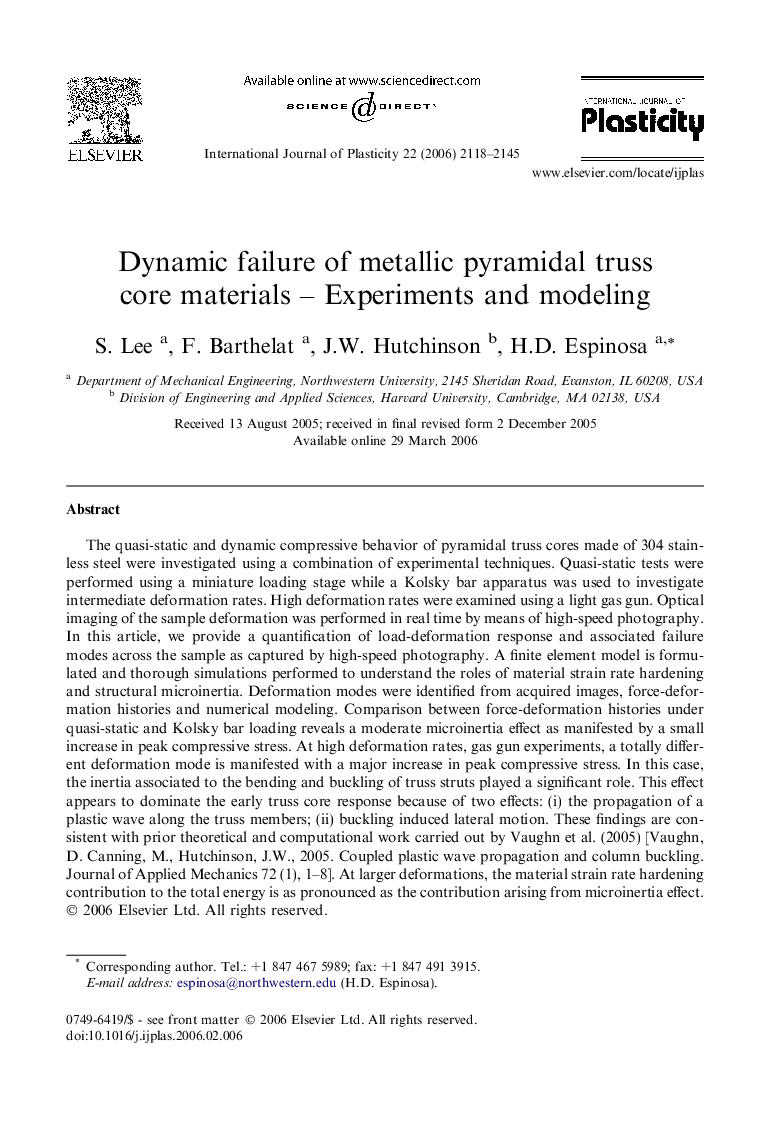| Article ID | Journal | Published Year | Pages | File Type |
|---|---|---|---|---|
| 789221 | International Journal of Plasticity | 2006 | 28 Pages |
The quasi-static and dynamic compressive behavior of pyramidal truss cores made of 304 stainless steel were investigated using a combination of experimental techniques. Quasi-static tests were performed using a miniature loading stage while a Kolsky bar apparatus was used to investigate intermediate deformation rates. High deformation rates were examined using a light gas gun. Optical imaging of the sample deformation was performed in real time by means of high-speed photography. In this article, we provide a quantification of load-deformation response and associated failure modes across the sample as captured by high-speed photography. A finite element model is formulated and thorough simulations performed to understand the roles of material strain rate hardening and structural microinertia. Deformation modes were identified from acquired images, force-deformation histories and numerical modeling. Comparison between force-deformation histories under quasi-static and Kolsky bar loading reveals a moderate microinertia effect as manifested by a small increase in peak compressive stress. At high deformation rates, gas gun experiments, a totally different deformation mode is manifested with a major increase in peak compressive stress. In this case, the inertia associated to the bending and buckling of truss struts played a significant role. This effect appears to dominate the early truss core response because of two effects: (i) the propagation of a plastic wave along the truss members; (ii) buckling induced lateral motion. These findings are consistent with prior theoretical and computational work carried out by Vaughn et al. (2005) [Vaughn, D. Canning, M., Hutchinson, J.W., 2005. Coupled plastic wave propagation and column buckling. Journal of Applied Mechanics 72 (1), 1–8]. At larger deformations, the material strain rate hardening contribution to the total energy is as pronounced as the contribution arising from microinertia effect.
